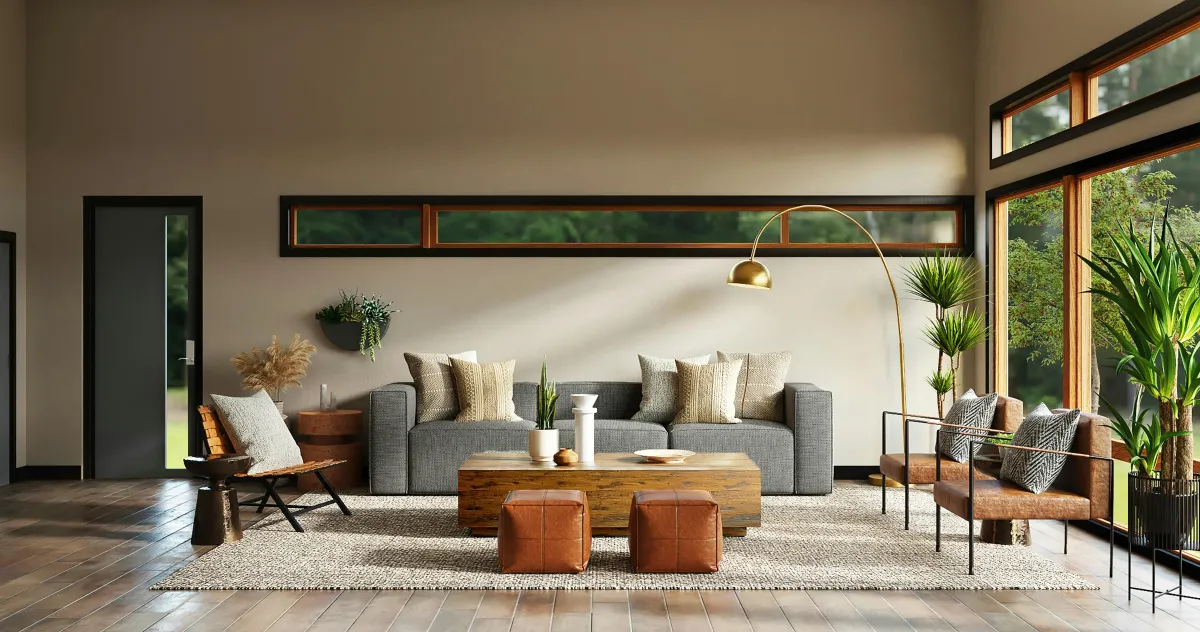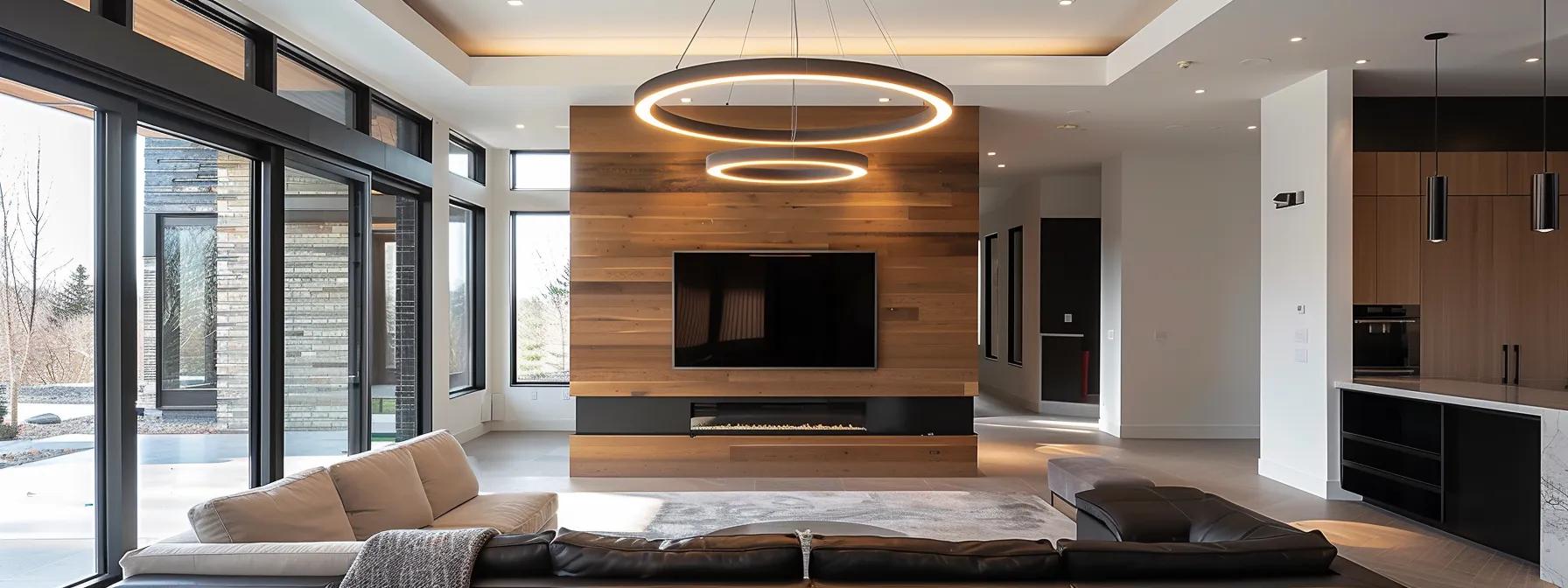
Modern Interior Trends That Are Redefining Custom Homes
Modern interior design is reshaping the way custom homes are built, prioritizing balance, efficiency, and personal expression. Today’s modern living spaces merge sleek layouts with layered textures, advanced home automation, and sustainable materials. From modern lighting to low-maintenance materials, each feature is designed for both style and everyday practicality. Eco-conscious elements like recycled materials and innovative concrete now coexist with integrated technology and high-end aesthetics. Personalization is key—closets, balconies, and other spaces are tailored to match individual routines and preferences. Custom Builder Connection (CBC) helps homeowners navigate this journey by connecting them with professionals who understand the value of personalized interiors and design collaboration.
Key Takeaways
Modern interior design emphasizes personalized interiors and efficient home design.
Sustainable features like recycled materials and innovative concrete support healthy home environments.
Integrated technology and home automation enhance comfort, functionality, and modern aesthetics.
Low-maintenance materials such as metal and glass interiors offer both durability and sophistication.
CBC supports design collaboration to bring personalized visions to life across every corner, from balcony to closet.
Latest Modern Interior Design Trends for Custom Homes

Modern interior design now blends innovative technology with sustainability and intentional aesthetics. Custom homes are embracing functional layouts with natural materials, automated features, and refined finishes. From open floor plans to bold lighting, each design element balances style and practicality. The focus is on comfort, usability, and long-term efficiency without compromising sophistication. These trends redefine how custom home interiors support everyday living while maintaining a timeless appeal.
Which Design Styles Are Leading the Modern Interior Movement?
The modern interior movement embraces various design styles:
Minimalism: Focuses on clean lines and uncluttered spaces, promoting tranquility and easy maintenance.
Scandinavian: Combines functionality with warmth using natural materials and muted palettes to create inviting, practical environments.
Industrial: Utilizes raw materials and open spaces, adding a rugged sophistication.
Eclectic: Incorporates artistic accents and custom features for a personalized touch.
Each style influences not only a space’s aesthetic appeal but also how homeowners interact with their environment.
How Is Sustainability Influencing Modern Custom Home Interiors?
Sustainability now guides material selection and construction methods. Eco-friendly products and energy-efficient systems have become essential. Designers use reclaimed wood, recycled metal, and low-emission materials to lower a home’s carbon footprint and combine these with designs that maximize natural ventilation and lighting. This approach improves indoor air quality, reduces energy consumption, and cuts long-term costs, all while ensuring a stylish and healthy living environment.
What Role Does Smart Home Technology Play in Modern Designs?
Smart home technology is integral to modern interiors. Systems for lighting, climate control, and security simplify daily routines and boost energy efficiency. For instance, adaptive LED lighting allows homeowners to adjust brightness and color temperature to suit any occasion, while voice-activated assistants and mobile integration make control intuitive. The use of these systems improves safety, reduces utility costs, and supports a seamlessly interactive home environment.
How Modern Design Styles Are Transforming Custom Homes

Modern interiors are shifting custom homes toward versatile, functional, and visually striking spaces. These styles support open layouts, minimalist finishes, and multi-purpose rooms. They enhance comfort while increasing design flexibility and future adaptability. Clean materials, integrated lighting, and thoughtful spatial flow define the look. Whether subtle or bold, each style choice supports daily living. The result is a space that reflects contemporary preferences and long-term usability. Homeowners can personalize without compromising structure. The transformation focuses on how people live today—and tomorrow.
What Defines Minimalist Interior Design for Custom Homes?
Minimalist design focuses on simplicity and functionality. It features:
Clean lines, neutral color palettes, and essential furnishings.
Open floor plans that promote uninterrupted flow and abundant natural light.
A reduction of visual distractions to create a calming atmosphere that boosts productivity.
This approach also values quality materials that double as statements of craftsmanship.
How Does Scandinavian Design Enhance Custom Home Interiors?
Scandinavian design emphasizes a balance between functionality and warmth. It is known for:
Simplicity, abundant natural light, and the use of organic elements like wood and stone.
Neutral color schemes accented with occasional bold colors.
A focus on comfort and practicality through sustainable, ergonomic furniture.
This style creates inviting spaces that promote a healthy, sustainable lifestyle.
What Are the Benefits of Industrial and Mid-Century Modern Styles?
Industrial and mid-century modern styles combine rugged durability with nostalgic charm:
Industrial design: Uses raw metal, exposed ductwork, and reclaimed wood to achieve a unique urban look, ideal for open-concept areas.
Mid-century modern design: Emphasizes clean lines, organic curves, and mixed materials to create warm, functional spaces.
Together, these styles yield interiors that are both timeless and adaptable to modern technology and evolving lifestyles.
How Can Emerging Design Styles Reshape Custom Home Aesthetics?
Emerging design styles bring innovative ideas and unique materials into custom home design. They may include:
Biophilic designs: Incorporate green walls and natural sculptures to bring the outdoors inside.
Maximalism: Uses bold color contrasts and eclectic furnishings to create vibrant, personalized spaces.
These innovative trends allow homeowners to infuse personality and cultural narratives into their homes while also embracing modern sustainability and technology.
Emerging Interior Design Styles Reshaping Custom Homes

New interior styles are redefining the aesthetics and functionality of custom homes. These trends bring in bold elements, organic textures, and layered design expressions. Focused on personalization, they blend innovation with lifestyle-driven planning. From biophilic touches to maximalist expressions, each style invites creativity. These interiors go beyond traditional templates and adapt to evolving tastes. The emphasis is on character and purposeful storytelling through design. Function, sustainability, and tech remain core pillars. These styles refresh how custom homes feel and function.
Biophilic and Nature-Inspired Interior Elements
Biophilic design connects indoor spaces with nature to improve well-being. It incorporates natural materials, indoor plants, and green walls as key features. Large windows and open layouts enhance sunlight and outdoor views. Natural textures like wood, linen, and stone add depth and softness. These homes feel more grounded and promote relaxation. Layouts are designed to improve air flow and light distribution. Colors mirror natural tones—earthy browns, greens, and sandy neutrals. The outcome is a calm, restorative environment.
Maximalism and Expressive, Layered Interiors
Maximalist design emphasizes personalization through bold colors, patterns, and diverse textures. This approach mixes vintage pieces with modern accents for depth. Layered artwork, rich fabrics, and sculptural furniture define the space. No two areas are identical, offering visual interest in every corner. Functionality is retained with purposeful layouts and storage solutions. The design thrives on contrast and individuality. Rooms feel vibrant and emotionally expressive. It’s a deliberate departure from minimalism’s restraint.
Sustainable Materials That Define Modern Custom Interiors

Sustainability plays a key role in shaping today’s custom home interiors. Homeowners are prioritizing materials that reduce environmental impact without compromising aesthetics. From reclaimed wood to innovative concrete finishes, the goal is balance—where eco-conscious choices also enhance durability and style. These materials support long-term function while offering unique textures and finishes. Integration with modern layouts ensures seamless visual flow. Interiors become more resilient, efficient, and comfortable. The emphasis is on longevity and low-maintenance beauty. Every material choice supports a healthier, smarter living environment.
Using Sustainable Wood for Texture and Warmth
Sustainable wood adds natural richness and tactile depth to modern interiors. It’s often used in flooring, wall treatments, cabinetry, and furniture. Responsibly sourced wood ensures minimal environmental disruption. Its grain patterns and tones introduce warmth into otherwise streamlined spaces. It works well across design styles—from minimalist to rustic modern. These surfaces offer durability and timeless appeal. They pair beautifully with both metal and natural stone. Sustainable wood also supports indoor air quality and environmental health.
Innovative Uses of Concrete in Interior Design
Concrete has evolved into a refined and versatile design element. Polished concrete floors offer a sleek foundation that’s durable and energy efficient. It’s also used for countertops, feature walls, and sinks with smooth or textured finishes. Its thermal mass helps maintain stable indoor temperatures. Concrete blends easily with wood, glass, and metal for contrast. It supports minimalist and industrial aesthetics alike. Design flexibility allows for customized tones and patterns. It’s a durable, low-maintenance option with visual impact.
Blending Metal and Glass for a Modern Interior Look
Metal and glass are staples in modern custom home interiors for their clean lines and visual transparency. Metals such as brass, steel, and aluminum add strength and reflective quality to fixtures. Glass surfaces—used in staircases, doors, and room dividers—create openness and light. Together, they balance industrial edge with refined elegance. These materials support open layouts and natural illumination. They’re durable and easy to maintain in high-traffic areas. Their neutrality lets other textures shine. The pairing adds structure, clarity, and timeless appeal to any room.
Integrating Smart Home Technology into Interior Design

Modern custom homes incorporate smart technology that improves comfort, control, and efficiency. These features are thoughtfully integrated to maintain the home’s visual aesthetic. Systems operate lighting, temperature, and security from centralized or voice-activated platforms. Devices are chosen not only for performance but for design compatibility. This integration simplifies daily life while conserving energy. Hidden wiring and wireless setups preserve clean design lines. Custom layouts consider optimal device placement. The result is a seamless blend of innovation and style.
Smart Lighting Systems That Improve Home Ambiance
Smart lighting allows homeowners to create dynamic atmospheres. Adjustable brightness and color temperature offer mood-based flexibility. Natural light can be enhanced with automated blinds or dimmers. Scenes can be programmed for different times of day or activities. Smart bulbs work with voice assistants or mobile apps. Fixtures are designed to be visually minimal yet highly effective. Lighting also supports energy efficiency and daily routines. It’s a practical and aesthetic upgrade.
Smart Security and Automation Options for Custom Homes
Custom homes benefit from advanced, integrated security and automation systems. These include remote-controlled locks, motion sensors, and surveillance cameras. Systems can send alerts and updates to mobile devices in real-time. Automation controls lighting, climate, and appliances based on set schedules. Touch panels or mobile apps allow full control from anywhere. Devices are often discrete, maintaining a clean aesthetic. Smart features reduce energy waste and improve safety. They add convenience without disrupting interior design.
Blending Technology Into Design Without Disrupting Style
Integrating technology requires balance between function and visual harmony. Devices should complement the room’s overall color palette and form. Wireless systems and low-profile designs help reduce visual clutter. Storage solutions can conceal hubs, cables, and routers. Designers place devices where they enhance experience but remain unobtrusive. Smart furniture can incorporate tech without changing aesthetics. Touch-sensitive surfaces and minimal interfaces preserve sleekness. Technology feels like a natural part of the environment.
Frequently Asked Questions
What are the primary modern design trends in custom homes?
Modern custom homes feature clean lines, open layouts, and natural materials that balance aesthetics with everyday function. Key trends include minimalist interiors, sustainable elements, integrated smart technology, and layered textures. Custom Builder Connection (CBC) helps clients explore these trends with design experts who tailor each home to reflect personal taste, lifestyle needs, and long-term goals.
How do sustainable materials influence custom home interiors?
Sustainable materials like reclaimed wood, recycled metal, and low-emission finishes enhance both visual appeal and environmental responsibility. These choices support healthier living and lower utility costs over time. CBC connects homeowners with designers who specialize in selecting eco-friendly options that maintain a modern, stylish interior while reducing the home’s carbon footprint.
What smart technologies are most beneficial for modern custom homes?
Smart lighting, automated climate systems, and integrated security are among the most valuable technologies in modern homes. These systems simplify daily routines, improve energy efficiency, and increase safety. CBC ensures homeowners work with professionals who know how to seamlessly incorporate tech into home designs without sacrificing aesthetic appeal.
How can modern design styles optimize space in custom homes?
Design styles like minimalism, Scandinavian, and industrial emphasize clean layouts, multi-functional furnishings, and open floor plans. These approaches enhance space efficiency and flow, especially in smaller or uniquely shaped homes. CBC helps clients explore design styles that suit their needs, ensuring each room serves a clear purpose while staying visually balanced.
Why is collaboration with interior designers critical in custom home projects?
Collaborating with interior designers ensures the home’s design aligns with both vision and function. Designers bring technical expertise, material knowledge, and an understanding of current trends. CBC supports this process by matching homeowners with skilled designers who listen, communicate clearly, and help transform ideas into practical, livable spaces that reflect the client’s lifestyle.
Conclusion
Creating a modern custom home goes beyond surface-level design—it’s about crafting personalized interiors that reflect lifestyle and intention. With trends focused on seamless technology, recycled materials, and energy efficiency, modern aesthetics now support healthier, smarter living. Design collaboration ensures that every space, from balcony to closet, is tailored for both beauty and practicality. CBC bridges homeowners with design experts who integrate home automation and sustainable elements into every room. Whether it’s modern lighting, efficient layouts, or low-maintenance materials, the result is a custom home built for long-term comfort and value. With CBC, home personalization becomes a smooth and inspiring experience.


